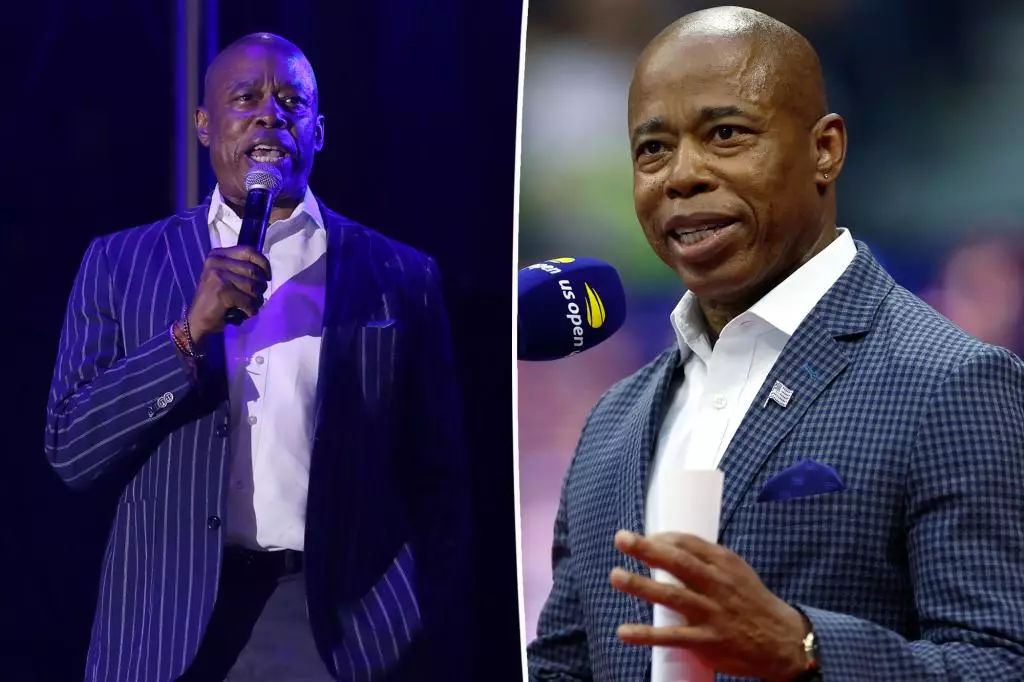In the realm of modern leadership, social interactions are more than casual encounters; they are strategic movements embedded within a web of power, wealth, and cultural capital. The recent escapades of New York City Mayor Eric Adams illuminate a broader truth: effective power brokers understand that influence extends beyond policy announcements and public speeches. It is cultivated through intimate, high-profile gatherings that capture the attention of key stakeholders and showcase their ability to navigate elite social circles. These events serve as platforms for reinforcing alliances, signaling intentions, and building an unspoken network of mutual support that can be more impactful than traditional political avenues.
Elite Social Gatherings as Power Playgrounds
The weekend activities of Mayor Adams, featuring exclusive parties at luxurious venues and participation in star-studded events, exemplify how influence is wielded under the guise of celebration. Attending a 50th birthday bash for Noah Tepperberg or mingling at billionaire Wayne Boich’s residence are not mere leisure pursuits—they are strategic moves in a carefully choreographed dance of social capital. Such occasions attract influential personalities—from hospitality moguls and tech entrepreneurs to celebrities—and create an environment where relationships are cultivated away from the glare of the media spotlight. It’s in these settings that decisions subtly shift and allegiances are reinforced, often without the need for formal negotiations.
The Politics of Timing and Presence
The timing of Adams’ weekend excursions demonstrates an acute awareness of how to maximize impact. His presence at Hamptons fundraisers, despite brief durations, underscores a deliberate effort to project commitment to local entrepreneurs and NYC’s business community. The narrative spun by his spokesperson paints these trips as essential sojourns—focused on supporting economic growth and community development. Yet, the strategic timing—coinciding with political rivals’ activities and high-profile fundraisers—heightens the sense of an ongoing contest for influence. When Adams and former Governor Cuomo frequent the same social spaces within minutes of each other, it underscores how these events are arenas for subtle battles of power, reputation, and relevance.
The Cultural Capital of Celebrity Endorsements
Adding a layer of cultural influence, Adams’ attendance at social events featuring celebrities like Robin Thicke, Adrien Brody, and various entertainers exemplifies how cultural capital translates directly into political clout. Performances, spontaneous collaborations, and the sheer glamour of celebrity attendance elevate the stature of the event—and by extension, the stature of those who participate. In these moments, leadership becomes intertwined with cultural relevance, creating a narrative that leaders are not just administrators but also central figures in a broader socio-cultural ecosystem. This symbiosis elevates their profile among constituents and key stakeholders alike.
The Subtle Art of Signal Transmission
What stands out about these social circuits is their capacity to send nuanced signals. Adams’ participation in smaller gatherings with prominent entrepreneurs and close associates signals a focus on economic development and community support. Meanwhile, the mixing of political figures with entertainment personalities conveys an image of relatability and accessibility. These signals serve to bolster trust and build informal coalitions that can have tangible repercussions in policy, funding, and public perception. Moreover, by embedding himself within these networks, Adams positions himself as a leader who understands the importance of social capital—an intangible yet powerful resource.
Impact on Power Dynamics and Public Perception
While critics might dismiss these gatherings as vanity or superficial mingling, the reality is that they are fundamental to how influence is shaped in contemporary society. The nexus of wealth, celebrity, and politics creates a fertile ground for negotiation, alliance-building, and ideology dissemination. For Adams, engaging in these social circles confirms his commitment to economic growth and community engagement, even if it risks being perceived as merely social fancy. Yet, for those with eyes attuned to power nuances, his ability to navigate these elite universes determines not just perception, but actual political leverage.
In the intricate dance of leadership, the real measure of influence often remains behind the scenes—hidden in exclusive invitations, quiet conversations, and shared moments of cultural celebration. The apparent frivolity of elite social outings belies their strategic importance. For leaders like Eric Adams, the capacity to seamlessly integrate into these high-stakes social environments is not just about personal enjoyment; it’s a calculated investment in the architecture of power. As societal hierarchies continue to evolve, understanding and mastering the subtle art of influence within these ultra-elite circles will determine who shapes the policies, narratives, and futures of our communities.

